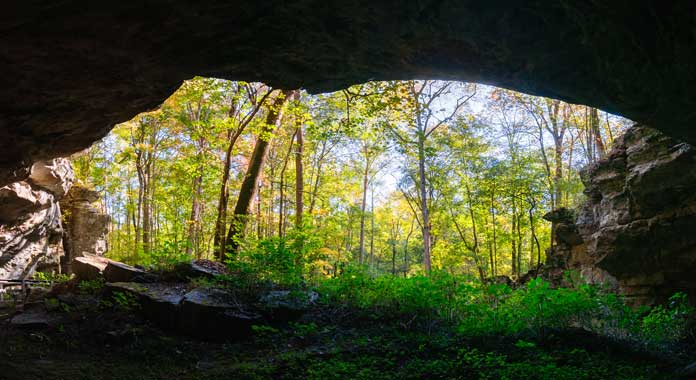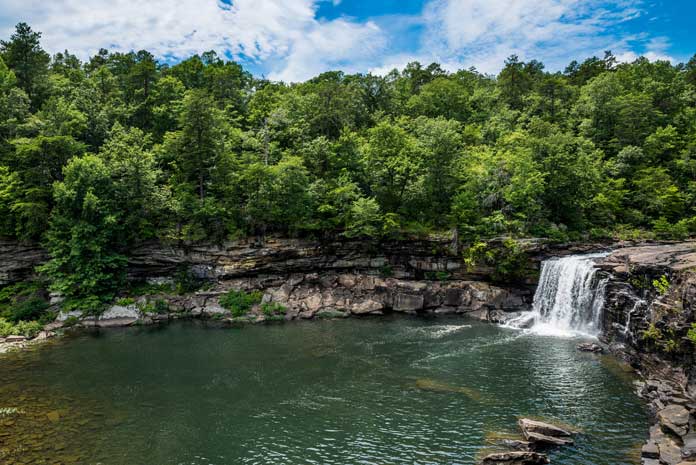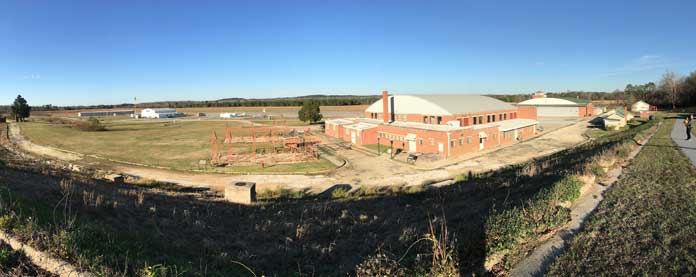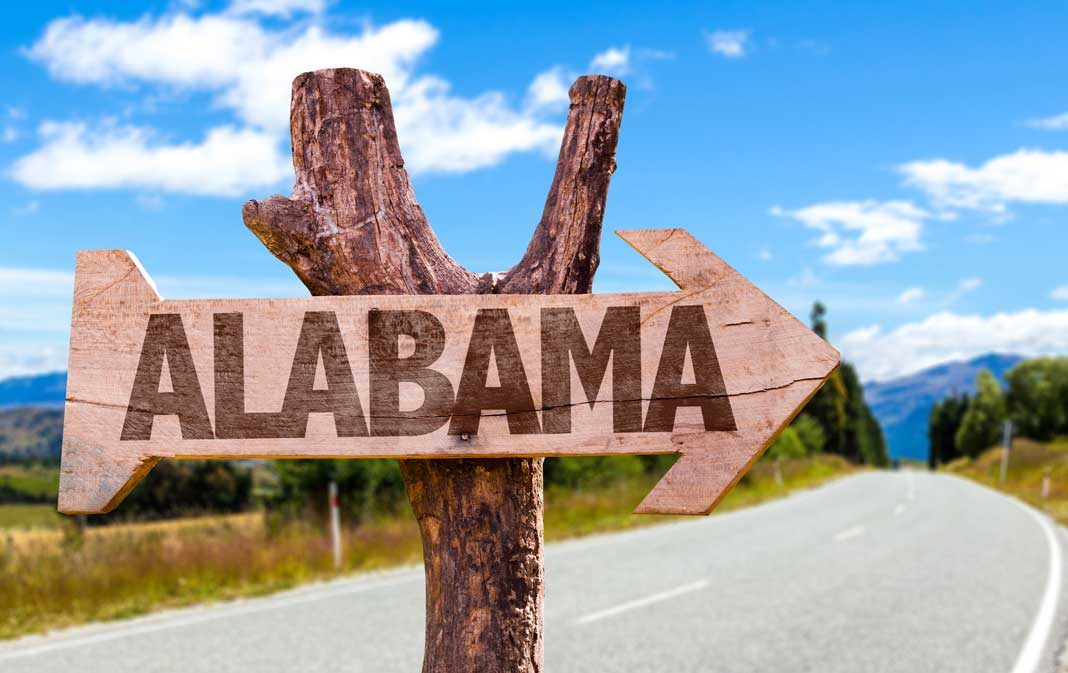The southern state of Alabama is also known as the “Heart of Dixie,” a commonly known phrase referring to the eleven southern states that seceded in the late 1800s. The state has a humid subtropical climate and is very lush and green. Rivers are scattered throughout the country, and it is known for having one of the longest navigable waterways in the U.S. The bottom tip of the state border the Gulf of Mexico along with the neighboring states. Alabama is rich in history, particularly the civil war and has several national parks within the state. Stop in one of these national parks in Alabama to discover the beauty of the scenery and learn about the secrets of its past.
Table of Contents
Russel Cave National Monument
Created as a national monument in 1961, Russel Cave is one of the rare examples of a cave with complete records of prehistoric cultures present. The cave interior has been mapped for a total of a little over 7 miles. The entrance is hard to miss, at is large and obvious. It was known the prehistoric Indians used the cave as shelter and a living place. There are several other entrances to the cave as well. A thick and lush forest and accompanying vegetation surround the cave. Over one ton of artifacts has been removed from the cave and surrounding area. These include charcoal (from fires), arrowheads, pottery shards, bones of animals and the remains of several adults and children buried at the site as well. Today, walkways have been built to allow visitors to explore the cave shelter and see where prehistoric people lived and thrived. There are a couple of walking trails that go through the woods and the around the exterior of the cave for visitors to see the lush vegetation and experience what prehistoric people had to live with.

Little River Canyon National Preserve
The Little River Canyon national preserve is a beautiful place as well as a favorite place for outdoor recreation. The forest surrounds the area, and the river has cut through the land creating gorges, pools, sandstone cliffs and huge boulders. The preserve is protected area along the top of Lookout Mountain and has over 15,000 acres of the preserve. The river flows down the middle of the mountain and has carved what some say to be one of the deepest canyons in the entire U.S. There are three major waterfalls in the preserve called the DeSoto Falls, the Little River Falls, and Grace’s High Falls. Hikers frequent the area although there are no visitor services provided here like other national parks. The reserve does have some camping opportunities available, and some places have some picnic tables, and there is also a favorite swimming hole. The preserve is a beautiful, water-filled area and provides some of the highlights of scenic views in Alabama.

Trail of Tears National Historic Trail
The Trail of Tears is unique in the fact that it is a national trail that passes through nine different states, one of which is the state of Alabama. In the mid-1800s, the path was used by the Cherokee people to move to Indian Territory in Oklahoma. Displaced from their homes, the Cherokee people crossed through the many states, leaving their homes behind for a new one. This action was based on the Indian Removal Act of 1830 in which many of thousands of Native Americans perished as they were forced to march to their new relocation homes. The Cherokee people crossed through the northern part of the state of Alabama, through neighboring states and on to Oklahoma. The trail commemorates the survival of the Cherokee people as well as the other tribes that were displaced.
Horseshoe Bend Military Park
This national military park is the site of the final battle of the Creek War, led by General Andrew Jackson. On March 27, 1814, General Andrew Jackson led his men against the Upper Creek Red Stick resistance in the battle known as the Battle of Horseshoe Bend. Over 800 Upper Creeks perished in the battle, making this the most significant Native American loss in any battle thus far. A treaty was signed by the Upper Creeks called the Treaty of Fort Jackson, in which 23 million acres of land in Alabama and Georgia was handed to the U.S. government. Try the nature trail in the park that winds around the battle site and the site of the Creek Indian camp in the early 1800s. People can go bating, have a picnic, fish, bicycle, or take a scenic drive to see the famous battle site area and the park.
Tuskegee Airmen National Historic Site
This historic site was created to commemorate the contributions of African America airmen in World War II. Moton Field is located in Tuskegee, Alabama and is the training site for pilots that were called the Tuskegee Airmen. It was created in 1941 as a new training air base for pilots. Until 1940, African Americans were not allowed to fly for the U.S. military. After pressuring the government, the all African American squadron known as the Tuskegee Airmen was formed. The national historic site was created for visitors to learn about the airmen and their contributions and discover facts about this time in U.S. history. The site has both indoor and outdoor spaces to see, including over 20 wayside exhibits, a scenic overlook, as well two Hangar Museums that house World War II-era aircraft and some other fantastic exhibits.

Muscle Shoals National Heritage Area
Located in northwestern Alabama, the Muscle Shoals National Heritage Area is located on a portion of the Tennessee River and surrounding area of Muscle Shoals. The area is rich in history and culture, attracting at first, Native Americans trying to cross the river and then later, European settlers trying to tame and develop the area. Battles were fought on the banks; cultures were created, immigrants and Native Americans called it home or attempted to cross the difficult river, as well as many other instances and events. The area is vital to the United States’ history, and the national heritage site was created and now managed by the National Park Service to protect and educate visitors.
The Green Parks of Alabama
The national sites, trial, and parks of Alabama are steeped in history. The state has seven national parks that draw over 700, 00 people to visit and learn about the events that took place here or see the beautiful, lush scenery. There is one national heritage area, seven national natural landmarks and thirty-eight national historic landmarks, all within the boundaries of the state. Discover the incredible history and beauty of this state and stop to see one of these attractive national parks in Alabama.




